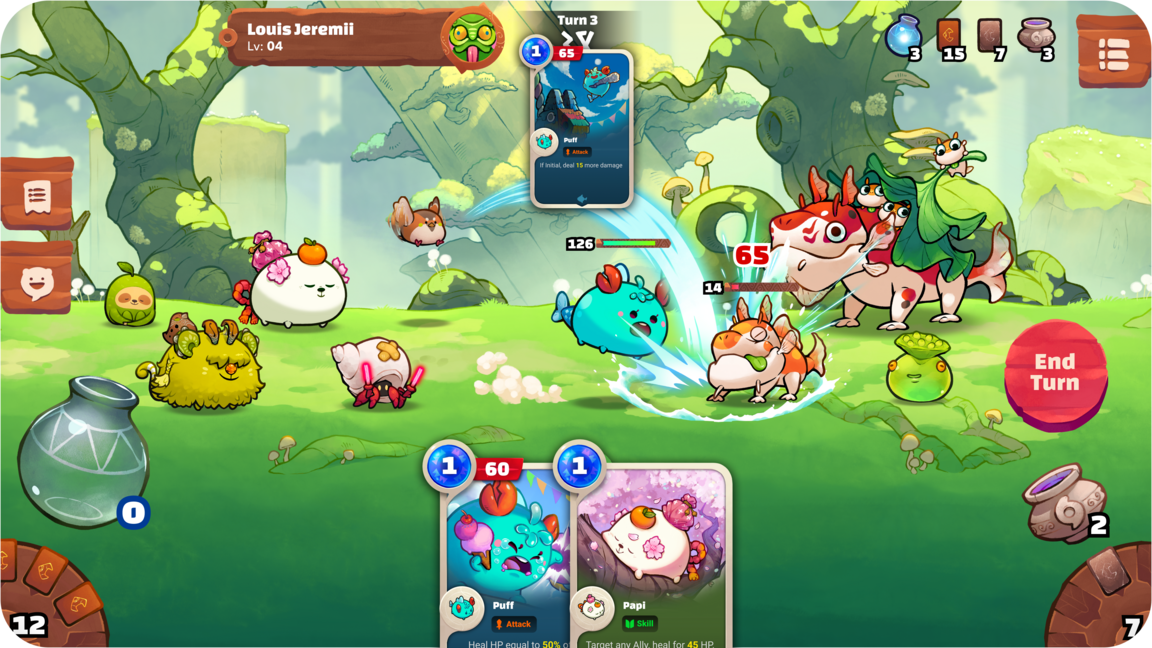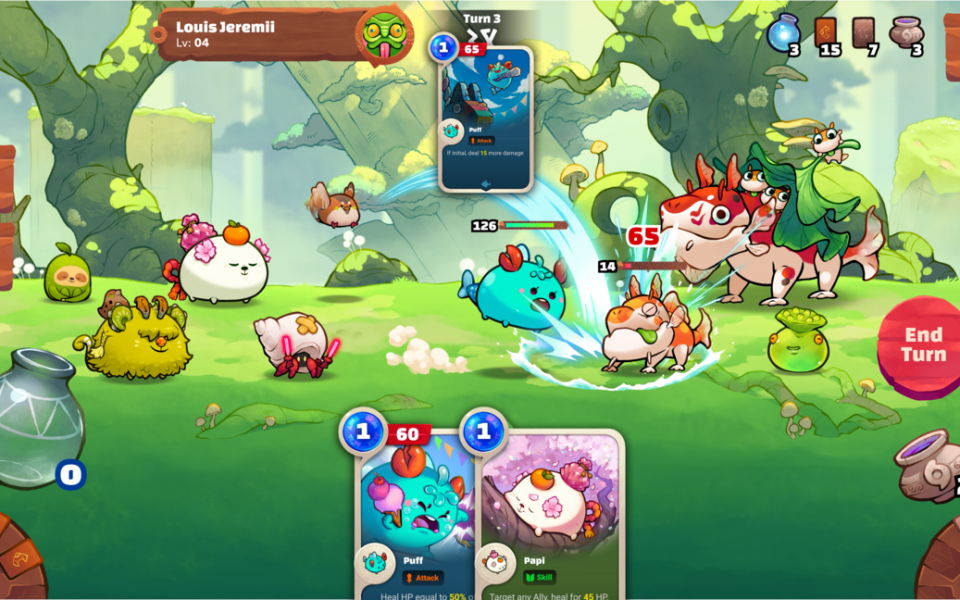Inside Axie Infinity: A Deep Dive Into the World’s Largest P2E Game
Axie Infinity isn’t just one of the biggest play-to-earn (P2E) games out there — it’s also one of the biggest NFT projects in the entire community, full stop. In large chunks of the world, Axie Infinity reigns supreme as the single most popular NFT. When it launched in March 2018, it presented users with an offer that almost seemed too good to be true: the chance to earn real money by playing a game.
However, Sky Mavis’ Poké-clone has seen a rough couple of months. The company is still reeling following a March 2022 hack that saw hundreds of millions of dollars stolen from its coffers. Since then, the game has slowly been hemorrhaging players, culminating in a mass exodus that saw more than 1.5 million players quit the game in June 2022.
With the odds stacked against it, is there any reason left to check out what was once the go-to play-to-earn game on the market?
Getting started with the game
Unlike with conventional gaming titles, getting started entails more than purchasing a copy of the game — or even simply downloading it, in the case of free-to-play titles. As specified on Sky Mavis’ website, a user’s first step is to secure themselves a Ronin wallet — which is a crypto wallet on an Ethereum sidechain most commonly used by blockchain gamers. After loading it with ETH, users can then proceed to the next step: purchasing Axies.
This means that instead of a kindly professor gifting you your mons to get started, you have to buy them first outright. But it works both ways. You can also breed Axies to sell on the secondary market — and if you’re really lucky, for quite a bit of coin. In November 2020, an Axie sold for 300 ETH, which was worth well over $1 million at the time on the secondary market. It isn’t just Axies themselves that can be traded in for real money, though. Through playing the game, users are awarded Smooth Love Potion (SLP) — an in-game currency that lives on the blockchain as a cryptocurrency, which players are free to exchange for fiat currencies afterward.

Now that we’ve broken down the “earn” aspect of the game, how does it actually play? As described on the game’s website, the game initially launched with an “idle battler” battle system reminiscent of the mobile game Idle Heroes. Games designed in this way are designed to keep running in the background, with minimal player interaction. Following a December 2019 update, the game transitioned to its current real-time card battle system, giving players a deeper gameplay experience.
Each of these battles incrementally makes a player’s Axies stronger. With stronger Axies, players have an easier time completing runs on both of the game’s modes: Adventure, a player-versus-environment (PVE) mode that pits the player against computer-controlled enemies, and its player-versus-player (PVP) mode that pits users against each other.
Like other online games, Axie Infinity’s PVP mode gives players the chance to increase their matchmaking rating (MMR) with every match, enabling them to climb up the ranked ladder with every win. Upon clearing various set MMR thresholds, players can expect to receive larger amounts of SLP with each win, at the cost of facing much tougher competition as they climb up the ranks.
A ‘life-changing’ game
In a vacuum, Axie Infinity’s P2E format — with the promise of greater rewards the better you are at the game — should provide more equitable earning opportunities to gamers than the current gaming landscape. But the reality of Axie Infinity’s impact on a large segment of its player base strays from this ideal to varying degrees.
So what better market to examine than the Philippines — which houses more than 40 percent of Axie Infinity’s player base? According to Sky Mavis, several factors enabled the game’s popularity to take off in the region relatively quickly: “high proficiency in English, strong gaming culture and widespread smartphone usage.” While these factors undoubtedly boosted the game’s popularity in the Southeast Asian nation, it omits the single most significant attractor to the game: money.
In developing nations like the Philippines, where annual household income rarely crosses the five-digit mark when converted to USD, Axie Infinity seemed like a perfect chance for many to supplement their monthly income. As such, the popularity of Axie Infinity — and NFTs as a whole — exploded in the country, as supported by a November 2021 survey conducted by Finder.
During the crypto and NFT world’s bull run throughout 2021, early Filipino adopters of the game experienced the full potential of the P2E format firsthand. In a November 2021 article on CNN Philippines, sentiment amongst interviewees was primarily optimistic. With the value of 1 SLP equivalent to roughly 3 Philippine pesos (5 cents for Americans) at the time, local gamers were able to enjoy some extra pocket money to spend on snacks at worst — and a life-changing financial opportunity at best.
More well-off users even offered gamers who couldn’t afford to buy their Axies outright the chance to earn via the game via a “scholarship” system. Through this system, Axie owners rent out their Axies to select individuals, taking in payments for these rentals via a percentage of SLP earned during the renter’s play time.
While a good idea in theory, this setup left Axie Infinity scholars in dire financial straits (and frankly burned out, to put it lightly). As the crypto and NFT worlds entered a bear market in 2022, scholars found fewer and fewer reasons to put in hours playing the game. One disgruntled ex-player even spoke to TIME Magazine on his experience, publicly decrying the game and urging others to stay away.
What lies beyond
Mere weeks after Axie Infinity’s multi-million dollar hack, Sky Mavis announced in April 2022 that a much more consumer-friendly version of the game was entering early access, called Axie Infinity: Origin. This experience aimed to offer new and old Axie Infinity players an opportunity to keep playing the game while the team tried to resolve the losses faced during the hack. Besides various gameplay tweaks intended to make it a “faster, more dynamic experience,” new players are now given free starter Axies, essentially making the game free to play.
As the game transitions toward free-to-play, the hope is that it’ll retain its core group of players well into the future. With Axie Infinity: Origin in early access, we may be able to take a glimpse into the game’s long-term staying power. This is due to the early access build of the game lacking its standout feature: P2E functionality. If Neopets is still thriving (albeit ridden with cheaters) today, there’s no reason Axie Infinity can’t do the same.
The post Inside Axie Infinity: A Deep Dive Into the World’s Largest P2E Game appeared first on nft now.

